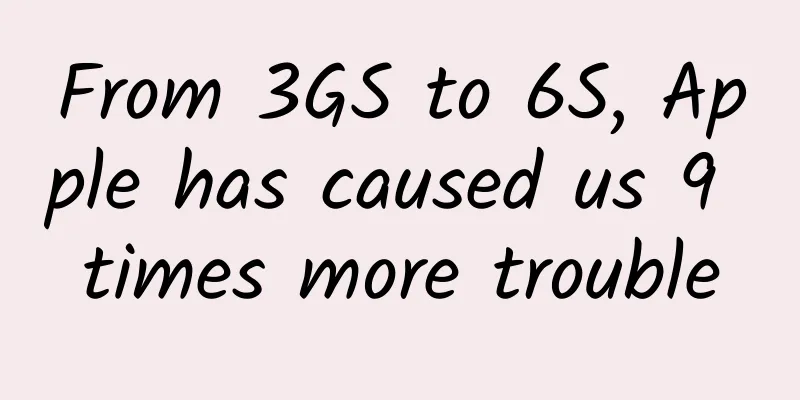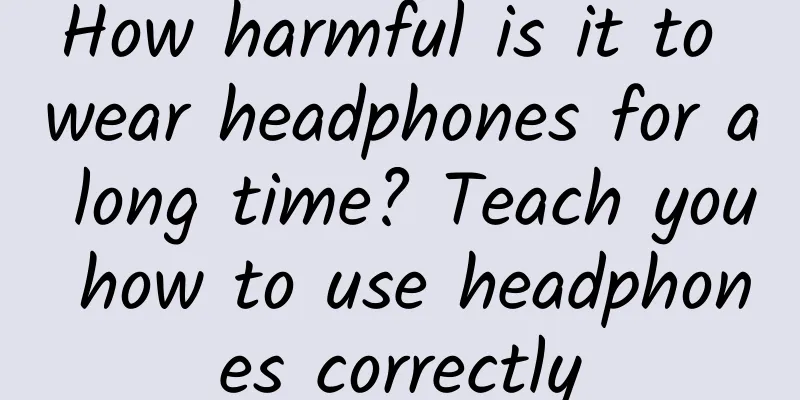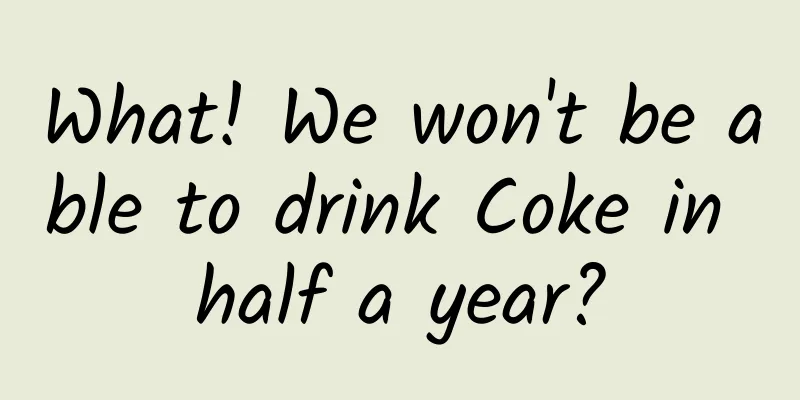How to reason decently?

|
Communication, discussion, debate, expounding opinions, clashing opinions, and situations where you need to convince others are almost everywhere. Even a matter like what to eat tonight requires a struggle. In such a situation, how can you support or refute the other party's point of view more clearly, reasonably, and logically, under the premise of rationality and reasoning? Written by Li Qingchao (Shandong Normal University) When we are trying to persuade others, or being persuaded by others, what is the most valuable information in the whole communication process? Is it the emotion of persuading others, or the reason of persuading others? In our previous article "Why is critical thinking important?", we introduced the basic concept of critical thinking and discussed "cause and effect". This article will introduce the most basic and important element of critical thinking: argumentation. The basic unit of critical thinking: argument Pangu created the world, and Nuwa created the world (not really), so the world was bustling with people, and there were right and wrong. People are always in the process of distinguishing right from wrong. Among them, some truth or falsehood does not depend on the will of the thinker, which we call "objective claims", such as whether there are golden toads and jade rabbits on the moon; and those that depend on the will of the thinker, we call "subjective claims", such as you don't like five-nut mooncakes. Please note here: your subjective assertion is an objective assertion to me - "someone doesn't like five-nut mooncakes" is an objective conclusion, because my thoughts cannot influence your will. "You don't need a reason to like someone." Neither do subjective assertions. There is no need to justify subjective likes and dislikes, such as whether rice dumplings should be sweet or salty. Objective assertions, however, require necessary evidence. The process of using evidence to prove a certain assertion is called "argumentation." An argument is made up of premises and conclusions. The premises provide reasons for the conclusions, and the conclusions are the assertions supported by the premises. "All men are mortal, Socrates is a man, and Socrates is mortal." In this argument, the first two clauses are premises, and the last one is the conclusion. Arguments are the basic units that enable critical thinking. No matter how complex the argument process is, it is made up of small, evaluable arguments. Argument and its components Arguments can be good or bad, strong or weak It must be emphasized here that there must be an internal logical relationship between the premise and the conclusion. In other words, the quality, strength, or weakness of an argument depends not only on whether the premise is true, but also on whether there is a relationship of deduction and support between the premise and the conclusion. In other words, if there is no logic, putting the correct premise and the correct conclusion together is nonsense, even with conjunctions such as "because, so". Depending on the proof relationship or support strength between the premise and the conclusion, arguments can be divided into deductive arguments and non-deductive arguments. A deductive argument is an argument in which the premises are true, which proves that the conclusion is true. If the premises are true, then the conclusion cannot be false, and the argument is a valid argument. A valid argument with true premises is a sound argument. Deduction refers to the process of inferring from the general to the specific. For example, the example of Socrates above is inferring from the human race as a whole (general) to a certain individual (specific). But in fact, there are also deductive arguments that do not conform to the deductive process, such as: "A=B, B=C, so A=C". Here we will discuss it according to the definition in this article. The concept of deductive argument determines that there are only two outcomes of an argument: good (true) or bad (false). A valid deductive argument can directly prove the conclusion. If the premise is true, then the conclusion must be true - this is a good argument. However, deductive arguments that conform to deductive arguments in form but do not conform to valid arguments logically, or deductive arguments with false premises, are invalid arguments and bad arguments. Several Cases of Deductive Argumentation The premise of a non-deductive argument cannot prove the conclusion, but it can support the conclusion, and the strength of supporting the conclusion can be strong or weak. For example, if A is murdered, and the investigation reveals that B has a grudge against A, then the possibility that B is the murderer is higher than that of other people who have nothing to do with A. The premise that B has a grudge against A increases the possibility of the conclusion that B is the murderer. In the subsequent investigation, it was found that there were and only C's fingerprints on the murder weapon that killed A. The strength of this evidence in supporting that C is the murderer is much higher than the strength of the argument that supports B as the murderer. The former (B may be the murderer) is a weak non-deductive argument, while the latter (C may be the murderer) is an extremely strong non-deductive argument. But no matter which piece of evidence it is, it cannot directly prove who the murderer is, because the owner of the only fingerprint on the murder weapon may still not be the murderer. Note: "inductive argument" can also be translated as inductive argument. Induction refers to the process from the specific to the general. The term "non-deductive argument" is used here, which means that in addition to deductive argument, there are other arguments, including induction, abduction, analogy, etc. The evidence in a non-deductive argument cannot prove the conclusion, but it can support the conclusion, but the strength of the support may be greater or lesser. Next, we use a picture to summarize the types of arguments in critical thinking and the basis for judging whether an argument is good or bad: Types of arguments and their strengths and weaknesses | Adapted from Wikipedia (click to see larger image) Can you speak properly? Therefore, when accepting or refuting an objective assertion, we must see whether the premise is true, and whether the argument from the premise to the conclusion meets the requirements of a "good or relatively good argument". Other than that, it is for reference only. What kind of argument is a bad argument, or even not an argument? Brooke Moore summarized the "Ten Major Thinking Fallacies" in his book "Critical Thinking". We localized it and classified it into three categories according to the strength of the argument. In addition to the examples in the article, you can also think about what fallacies you have seen. Weak Argument 1. Generating fallacies by criticizing the source of the position: refuting the argument by criticizing the source of the position. For example: This person always talks nonsense and never tells the truth! 2. Love the house and love the dog, halo effect: In comparison, it is also incorrect to believe in someone's judgment simply because he or she is an expert or because you simply like him or her. Yes, yes, yes, you are right. 3. Public opinion is the key to success. People believe that what everyone believes is true. Everyone is stocking up on vegetables, so why don’t you buy some? The above three situations are biased and lazy ways of thinking that use information sources instead of arguments. Celebrities and experts endorse products by taking advantage of this lazy way of thinking. Its essence is non-deductive argumentation, which talks about a little bit of truth. "I love my teacher, but I love the truth more", "It is better to have no books than to believe in them completely", "Don't be ashamed to ask questions from those who are inferior to you", let's encourage each other. Continental drift is a familiar and currently recognized theory of the formation of the earth's continental plates. The theory was founded by German geologist Wegener and published publicly in 1912. But until the 1970s, before the continental drift theory was widely accepted, there were many other hypotheses, such as the earth expansion hypothesis. The expansion hypothesis holds that the earth was originally a planet covered by land. As the earth's volume expanded, the land rose and was separated by the ocean. Today, the earth expansion hypothesis has many problems, but it still has many supporters, and the most famous supporter is Darwin. We don't have to support the earth expansion hypothesis because of Darwin's support, nor do we have to deny Darwin's theory of evolution because Darwin "actually" supported a wrong hypothesis. Figure: The process of continental plate formation advocated by the Earth Expansion Hypothesis. Source: Wikipedia Wrong Argument 1. To generalize or draw conclusions based on a small or biased sample. The neighbor of Lao Wang in the next village got pregnant with a boy after taking this medicine. 2. Alarmism, exaggeration, and straw man fallacy: exaggerating and misinterpreting other people's positions, setting up false targets for attack, and refuting them. If everyone thinks the same way as you, wouldn't the world be in chaos? 3. After this, because of this: Just because they happen one after another, we assume that there is a causal relationship. My eyelids twitched this morning, and it really was a bad day. The above three situations are careless and irresponsible ways of thinking, which exaggerate the role of individual premises, distort conclusions or use false logical relationships. Their essence is bad argumentation and perverse logic. Biologists generally believe that living things can only come from living things, and non-living matter can never spontaneously produce new life at any time. This is the theory of biogenesis (if you are interested, you can read "Oh, time does not flow back, can cooked eggs come back to life?"). However, "spontaneous generation" has a longer history. As early as the ancient Greek period, Aristotle observed that many frogs and fish appeared after the flood, and thus proposed the view that life can be generated from nothingness. Similar to the Chinese "fireflies grow from rotten grass", Aristotle made the mistakes of "hasty generalization" and "after this, because of this". No argument 1. Shouting and angry "argument": using excessive emotions and passionate tones instead of reasons for rebuttal. Who do you think you are? How dare you talk to me like that! 2. Coercion and inducement: Using intimidation or inducement to force the other party to change their opinion. 3. Be evasive and divert attention: answer questions irrelevantly and avoid the focus of the question. I have read a lot of different books recently. 4. Wishful thinking and escaping from reality: Based on personal preference, refusing to discuss the truth and facing reality. He has tried very hard! The above four situations are using emotions, means, language skills to replace arguments, or simply giving up arguments. The essence of this is unreasonable. It seems that I don’t need to give any examples, as everyone is familiar with them and uses them frequently. Therefore, when accepting other people's opinions, expressing your own opinions and refuting other people's opinions, for the sake of your own decency and taking into account the feelings of others, you must compare them with the requirements of "good arguments" and avoid intentionally or unintentionally using the above-mentioned "bad arguments" or being unreasonable. Conclusion Treasure the opportunity to think and speak, respect the person you are talking to, and be a reasonable person. Finally, everyone is welcome to share in the comment section the "weak argument, wrong argument, no argument" method that you have encountered or used! Acknowledgements: Thanks to Mr. Su for being our example! “The unexamined life is not worth living.” —Socrates References [1] https://en.wikipedia.org/wiki/Lung_cancer [2] https://www.open.edu/openlearn/mod/oucontent/view.php?id=20669§ion=4 [3] https://en.wikipedia.org/wiki/Lung_cancer [4] https://en.wikipedia.org/wiki/Bald%E2%80%93hairy Special Tips 1. Go to the "Featured Column" at the bottom of the menu of the "Fanpu" WeChat public account to read a series of popular science articles on different topics. 2. Fanpu provides a function to search articles by month. Follow the official account and reply with the four-digit year + month, such as "1903", to get the article index for March 2019, and so on. Copyright statement: Personal forwarding is welcome. Any form of media or organization is not allowed to reprint or excerpt without authorization. For reprint authorization, please contact the backstage of the "Fanpu" WeChat public account. |
>>: Do you know where the fire-fighting facilities are around you?
Recommend
We have summarized ten changes for you to understand in iOS 10 beta 4
On the morning of August 2, Apple released the fo...
360 Security Router P1 Review: A Great Killer Under 100 Yuan
After deciding to join hands with the Internet mo...
Cao Yu Shoulder Training Baidu Cloud Download
Cao Yu shoulder training resource introduction: C...
How much is the price to join the Dingxi Photography Mini Program? Dingxi Photography Mini Program Franchise Price Inquiry
How much does it cost to join the Dingxi Photogra...
How much is the monthly old-age allowance for an 80-year-old in 2022? How to apply? Attached are the latest standards from various places!
The silver wave is coming rapidly in my country. ...
Research shows: Those who don’t wear masks or get vaccinated may be narcissistic?
Throughout the COVID-19 pandemic, experts have en...
How to improve the conversion rate of cash loan products?
1. The focus of products at different stages is d...
Note 8 pre-sale price is hard to exceed 10,000 yuan. It seems Samsung has really hurt the hearts of Chinese consumers.
As the annual flagship new product, Samsung has h...
Southern Ox Year Fortune 2021, How much does Southern Ox Year Fortune cost?
This program is a fortune program for the Year of...
Uncle San's huge Qianchuan detailed gameplay course
First Course The latest core gameplay of Juzhi Qi...
iOS 14's most controversial feature, should it be removed?
The App Library feature is a bright new feature o...
Growth Hacking in Operations: Explosive Marketing?
Let’s talk about growth hacking today. Growth hac...
Let's talk about phantom types in Swift
Preface Ambiguous data is arguably one of the mos...
Useful Information | The most comprehensive guide to short video distribution on Douyin, Kuaishou, etc.!
In the Internet age, short videos are king. Short...
MQ-25A provides aerial refueling for F-35C, and the Stingray grows rapidly, achieving a triple jump in the short term
The MQ-25 test aircraft, known as T1, conducted i...









